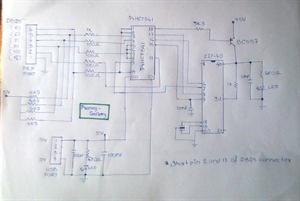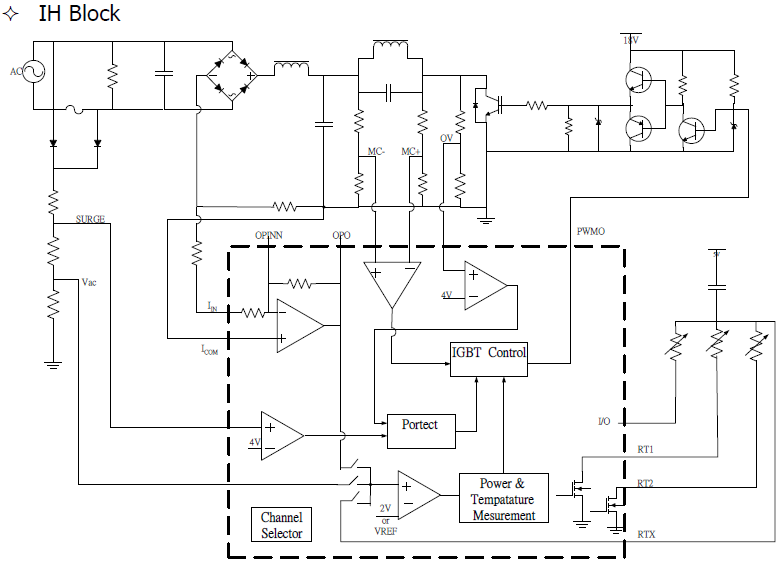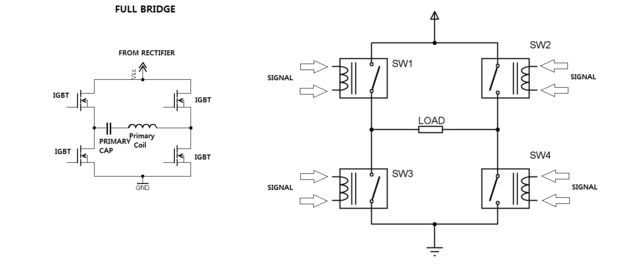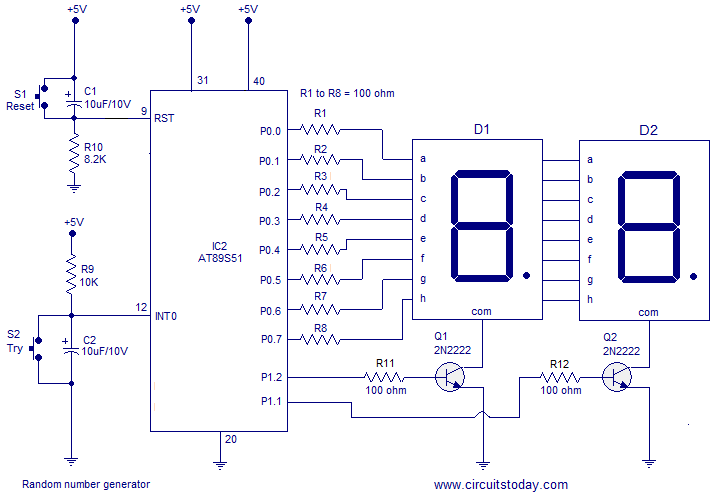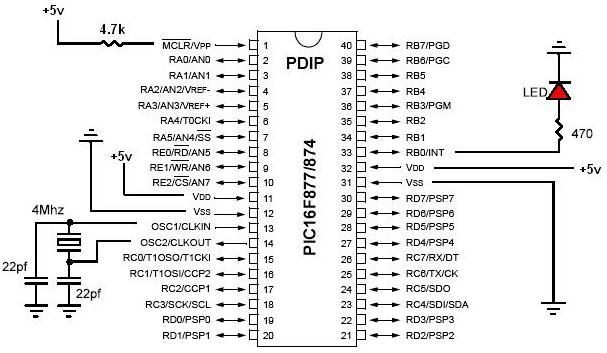
Microcontroller
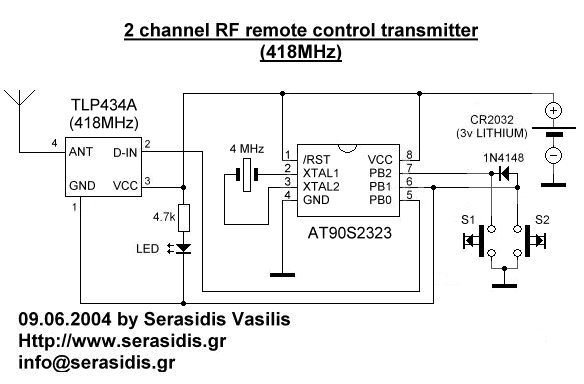
The circuit is compatible with all 2323 chips, but it is optimized for the AT90LS2323, which operates at a voltage range of 2.7 to 6 volts. The microcontroller utilized in this design is the AT90S2323, which functions effectively within the specified voltage range.
The AT90LS2323 is an 8-bit microcontroller that belongs to the AVR family, featuring a low-power architecture designed for efficient performance in embedded systems. It incorporates a 16-bit timer/counter, multiple I/O ports, and a rich set of communication interfaces, making it suitable for various applications, including automation, control systems, and sensor interfacing.
The operating voltage range of 2.7 to 6 volts allows for flexibility in power supply choices, enabling the microcontroller to be used in battery-powered devices as well as in systems powered from standard voltage sources. The AT90S2323 variant also supports in-system programming, facilitating easy updates and modifications to the firmware without the need for physical access to the microcontroller.
In designing a circuit with these components, careful consideration should be given to the power supply design, ensuring that the voltage remains within the specified range under all operating conditions. Additionally, the layout of the circuit board should minimize noise and interference, particularly around the microcontroller's clock and reset pins, to ensure stable operation.
The use of bypass capacitors near the power pins of the microcontroller is recommended to filter out any high-frequency noise that may affect performance. Furthermore, proper decoupling techniques should be employed to maintain the integrity of the power supply and improve the overall reliability of the circuit.
Overall, the AT90LS2323 and AT90S2323 microcontrollers provide a robust foundation for a wide range of electronic applications, with their versatile features and operating characteristics supporting complex functionality in a compact form factor.Can work in all 2323 chips but better is AT90LS2323 with working voltage 2.7 6 volts. The micro controller that I use is AT90S2323 with working .. 🔗 External reference
The AT90LS2323 is an 8-bit microcontroller that belongs to the AVR family, featuring a low-power architecture designed for efficient performance in embedded systems. It incorporates a 16-bit timer/counter, multiple I/O ports, and a rich set of communication interfaces, making it suitable for various applications, including automation, control systems, and sensor interfacing.
The operating voltage range of 2.7 to 6 volts allows for flexibility in power supply choices, enabling the microcontroller to be used in battery-powered devices as well as in systems powered from standard voltage sources. The AT90S2323 variant also supports in-system programming, facilitating easy updates and modifications to the firmware without the need for physical access to the microcontroller.
In designing a circuit with these components, careful consideration should be given to the power supply design, ensuring that the voltage remains within the specified range under all operating conditions. Additionally, the layout of the circuit board should minimize noise and interference, particularly around the microcontroller's clock and reset pins, to ensure stable operation.
The use of bypass capacitors near the power pins of the microcontroller is recommended to filter out any high-frequency noise that may affect performance. Furthermore, proper decoupling techniques should be employed to maintain the integrity of the power supply and improve the overall reliability of the circuit.
Overall, the AT90LS2323 and AT90S2323 microcontrollers provide a robust foundation for a wide range of electronic applications, with their versatile features and operating characteristics supporting complex functionality in a compact form factor.Can work in all 2323 chips but better is AT90LS2323 with working voltage 2.7 6 volts. The micro controller that I use is AT90S2323 with working .. 🔗 External reference
